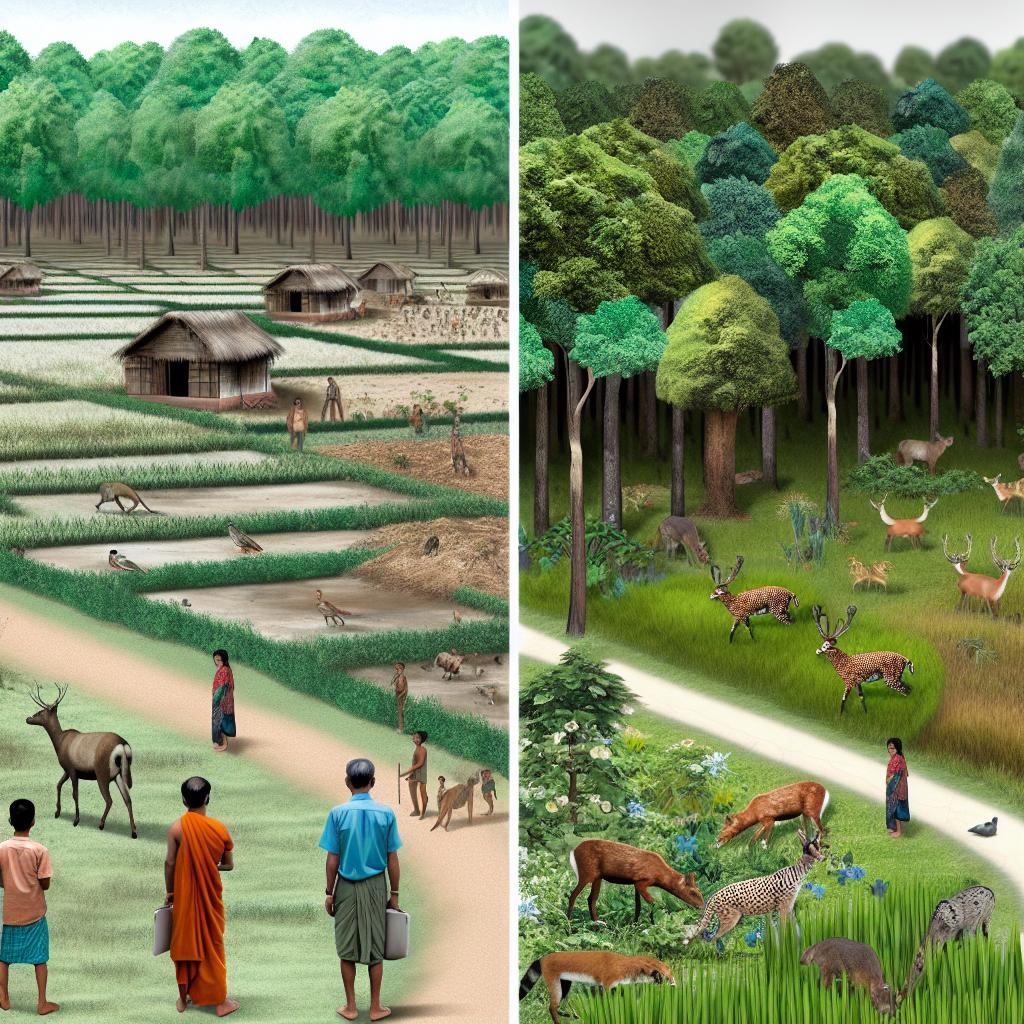
How Rewildering Affects Local Communities
Understanding Rewildering
Rewildering, also known as rewilding, refers to the process of restoring natural habitats to their original states before human intervention significantly altered them. This approach is increasingly recognized as a powerful tool in environmental conservation, aiming to return areas to a more functional and biodiverse state. While the ecological benefits are evident, understanding how rewildering affects local communities is crucial.
Impact on Local Economies
Rewildering can have a profound effect on local economies. This process often shifts land use away from agriculture or development towards conservation. In some cases, this transition might initially pose economic challenges for communities that depend on land for farming or development projects. However, over time, rewildering can stimulate economic activities differently. For example, eco-tourism becomes a potential revenue stream as tourists visit areas to experience restored natural landscapes. Prominent rewildering projects often bring increased visibility to the regions, attracting funding and investment opportunities that can revitalize local economies.
With the growth of eco-tourism, local businesses can benefit from increased foot traffic. Enterprises offering guided tours, accommodation, and local crafts often see an uptick in demand. Furthermore, rewildering can create new job opportunities in conservation management, wildlife monitoring, and research. These jobs not only support the economic foundation of the community but also enhance the skill sets of local workers, offering long-term career prospects.
Governments and non-profit organizations frequently invest in infrastructure to support rewildering efforts, which can improve transportation, communication, and public facilities. These enhancements can have positive spill-over effects into other economic sectors, fostering an environment conducive to sustainable growth.
Effects on Biodiversity
The primary goal of rewildering is to increase biodiversity and restore ecosystems. This can have several positive impacts on local communities. With richer biodiversity, there is often an increase in ecosystem services such as pollination, water purification, and enhancement of soil quality, benefiting agricultural activities. Additionally, communities might experience an improvement in air and water quality, leading to potential health benefits. Restored ecosystems can also reduce vulnerabilities to climate change, offering natural protections against extreme weather events.
Rich biodiversity can also contribute to scientific research and education. Researchers may flock to reborn ecosystems to study flora and fauna, bringing academic interest and potential funding to the area. Educational institutions can use local rewildering projects as living laboratories, cultivating a generation better informed about ecological conservation and sustainability.
Furthermore, the introduction of key species in these projects often plays a significant role in ecological balance. Apex predators, for example, can help control herbivore populations, thus allowing vegetation to thrive. This rebalancing allows for a diverse and robust ecosystem where plants and animal species can coexist, maintaining the natural checks and balances of an ecosystem.
Social and Cultural Impacts
Rewildering can also influence the social and cultural fabric of communities. It can foster a sense of stewardship and pride in conserving natural habitats. Educational opportunities arise as communities become involved in monitoring and research activities associated with rewildering projects. Local schools and organizations can collaborate on initiatives that both educate and empower community members about environmental conservation efforts. However, it is essential to consider and address any cultural ties to land use practices that rewildering might impact.
By involving community members in these projects, there is an opportunity to weave traditional knowledge and modern conservation techniques, enriching the overall approach. This fusion can strengthen cultural identity, allowing communities to preserve their heritage while adapting to new environmental paradigms.
Cultural events celebrating local biodiversity and conservation efforts can be initiated, reviving traditions and fostering community cohesion. These events can also serve as tourist attractions, showcasing the region’s unique cultural and ecological history, thus strengthening the bond between culture and nature conservation.
Challenges and Considerations
Despite the potential benefits, rewildering initiatives can encounter resistance and numerous challenges. Community engagement and effective communication are critical in addressing concerns and ensuring that local voices are heard. Some communities might fear loss of land or cultural heritage, so it’s crucial that planners include stakeholders in decision-making processes and develop strategies that acknowledge and respect existing community priorities.
Collaborative efforts between government entities, non-profit organizations, and local citizens can help ensure that rewildering projects are designed to offer mutual benefits, both ecologically and socio-economically. Additionally, transparent communication about the long-term goals and benefits of rewildering can help build trust and support among community members.
Introducing rewildering in areas that are already under economic stress can be challenging. Communities used to agricultural or industrial use of land might initially resist changes. Therefore, it is important to present clear and quantifiable benefits, showcasing success stories and potential outcomes to demonstrate that the long-term gains outweigh short-term inconveniences.
Legal frameworks need to be established to ensure that land rights and resource access are equitably addressed. Policymakers should establish guidelines that consider both conservation goals and community needs, creating policies that respect local knowledge and support sustainable practices.
In conclusion, while rewildering presents various challenges, its multifaceted benefits offer promising avenues for ecological rebalancing and community enrichment. The successful implementation of rewildering efforts depends on building strong, cooperative frameworks that align ecological goals with economic and cultural interests. By doing so, rewildering not only revitalizes landscapes but also the communities that inhabit them, paving the way for a more sustainable and harmonious coexistence with nature.
Further reading on the topic of rewildering and its effects on local communities can be explored through various academic articles and case studies available online.